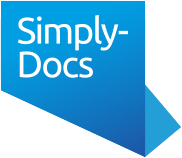
There are five major risks to the wellbeing (or even the existence) of small charities in the UK: decline in funding and donations, damage to reputation, inadequate insurance cover, loss of data, and fraud.
Funding
In this post, we are focusing on funding. Many small charities are in crisis due to lack of adequate income. On average over the past three years, when earned income, voluntary income and statutory income sources are placed together, it appears that small charities have only experienced a total overall growth of 3%. What can be done to improve the situation?
Voluntary Income
The charity sector relies heavily on voluntary income. The National Council for Voluntary Organisations (NCVO) found in 2016 that the overall trend for voluntary income is that it has been flatlining for some time. This has been the experience of small charities in particular. In a recent edition of a quarterly report produced by the Foundation for Social Improvement’s (FSI), it found that total voluntary income of small charities since 2013 has only increased by 1%. This is causing increasing difficulties for many small charities trying to bridge the gap between static income and a significant rise in the demand for their services.
Why Has Voluntary Income Not Increased?
A number of factors have affected voluntary income levels. Fundraisers at small charities are having to contend with an increasingly challenging environment. Although public trust in small charities delivering local services is still relatively high, as at mid 2016 there was a fall in public trust of charities’ fundraising methods to the lowest level since 2005 although there are now some signs that public trust is now growing). There is less disposable household income than in the past, and so a lower level of donations. Corporate donations have fallen. Many smaller charities find that their message is being lost due to larger charities presenting a challenge to their fundraising efforts. There is the potential for the economy to perform less well following the Brexit referendum vote with the consequent real threat that there will be a reduction in charitable donations. Regulation of fundraising has also become tougher, and trustees’ responsibilities in relation to fundraising activities are now greater.
What Has Happened to Other Forms of Income?
Over the past three years, charities’ statutory income has dropped by 8%. Since the 2008 financial crisis, small and medium-sized charities have lost substantial income from central and local government in the form of both grants and contracts. With voluntary income of small charities remaining static or falling in some cases, many are struggling. Some small charities who have been reliant on statutory income find that their voluntary income does not sufficiently compensate for falls in their statutory income. An increasing number of small charities are having to dip into reserves in order to continue their day to day work. This trend is worrying, especially in view of the fact that a substantial proportion of small charities do not hold any reserves.
However, in contrast, over the same period the level of charities’ earned income has increased by 9%. Charities’ earned income includes fees for their services and also income from selling goods or services to raise money.
Increasing Small Charities’ Income
So, there is a need to increase income of small charities across the UK. How can they achieve an increase, and which type(s) of income can they realistically increase?
Data seems to indicate that in comparison to larger charities, small and medium-sized charities have proportionally lost more of their government income and gained less income from individuals, and they can expect to see little rise in income from donations or government.
However, small charities have increased their earned income very significantly. Although this has not been enough to cover all lost income from government, it has replaced some of that shortfall. Between 2007/08 and 2014/15, across all of the charity sector earned income from the public grew 35% while donations from the public grew only 6%. According to NCVO analysis, earned income is the best prospect for future growth.
Are small charities trying to increase their earned income? Should they try to do so further? Will they be able to do so?
It appears that some charities – especially those which have seen no increase in government funding – have set out to alter their approach to generating income. For example, charities have developed partnerships with other charities or merged with other charities, and some have made use of financial mechanisms such as social impact bonds and creation of social enterprises. Increasing earned income may involve setting up a trading arm of a charity, market research, upskilling finance and other staff, and taking greater commercial risks. It might be a new type of activity or service or it might be selling services to the public using existing expertise already used or developed within the charity.
For some charities, “earned income” is now a major part of their total income, but for smaller charities, i.e. those more likely to have lost voluntary or statutory income, it may be difficult to establish and maintain an earned income stream especially where they lack the necessary skills and resources.
What has been your experience?

